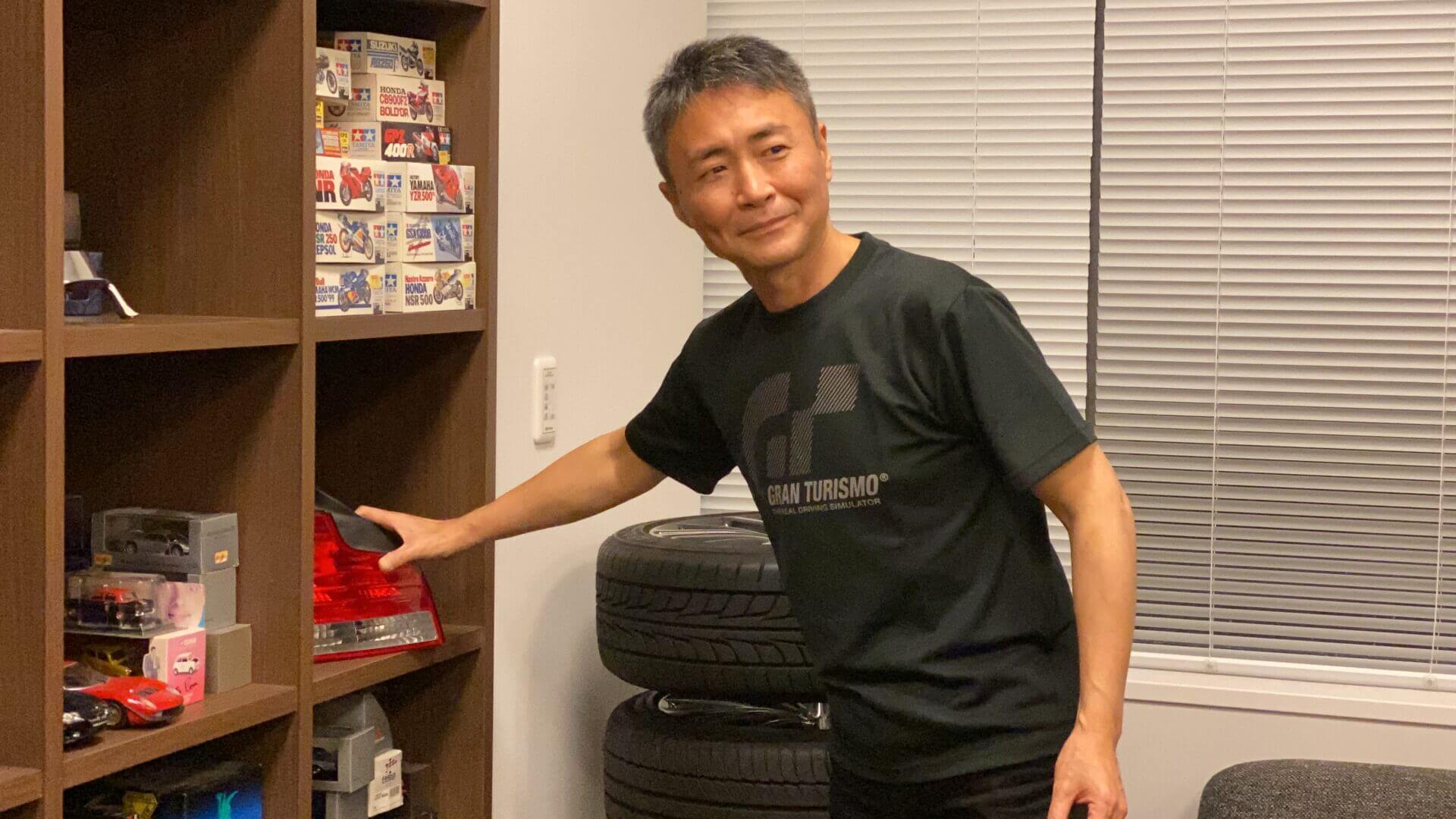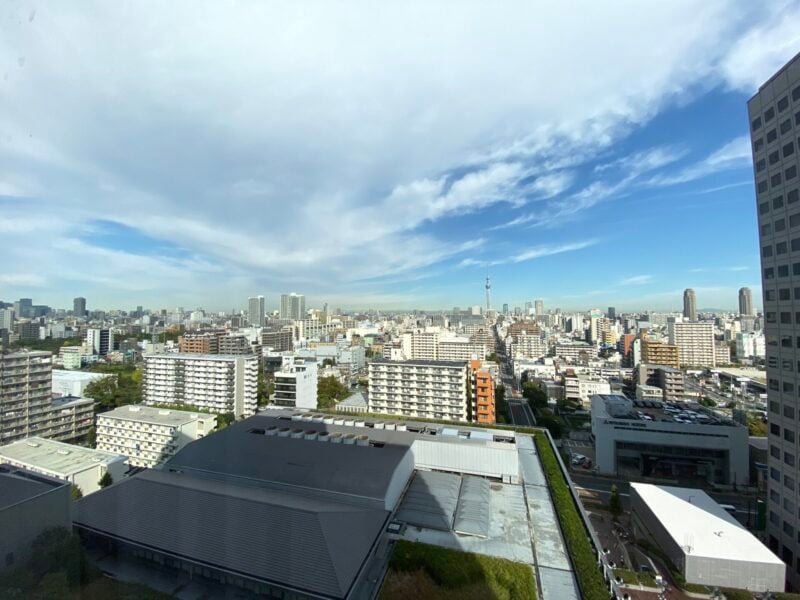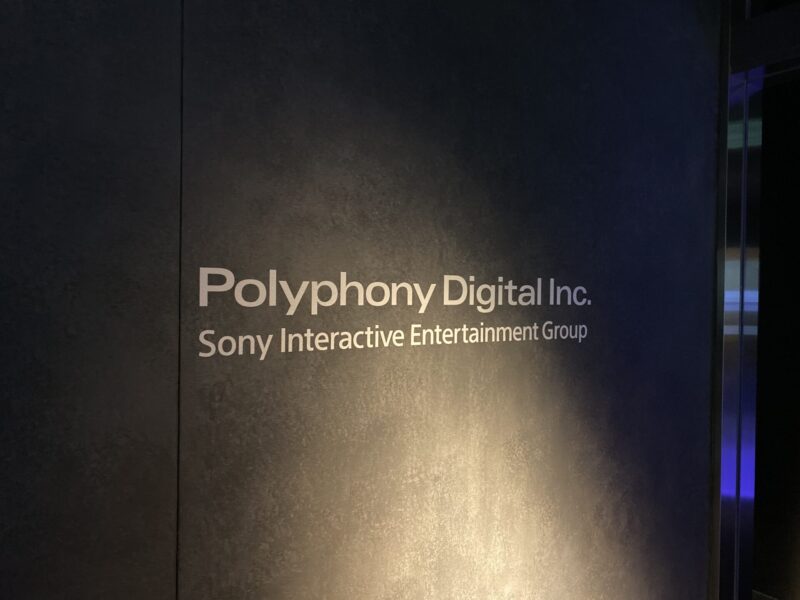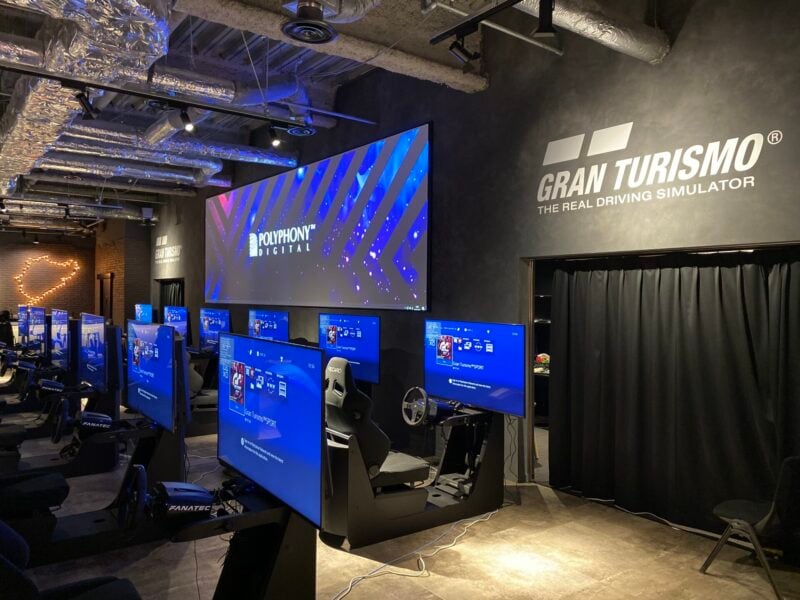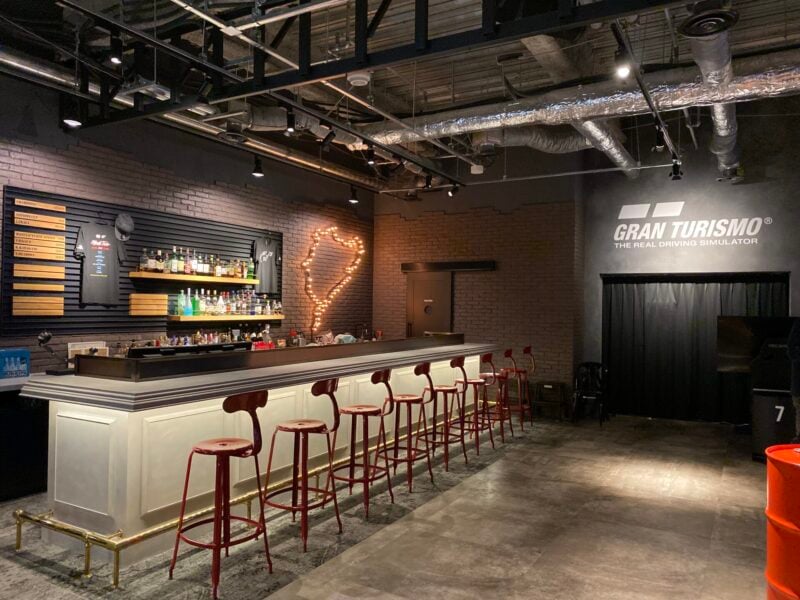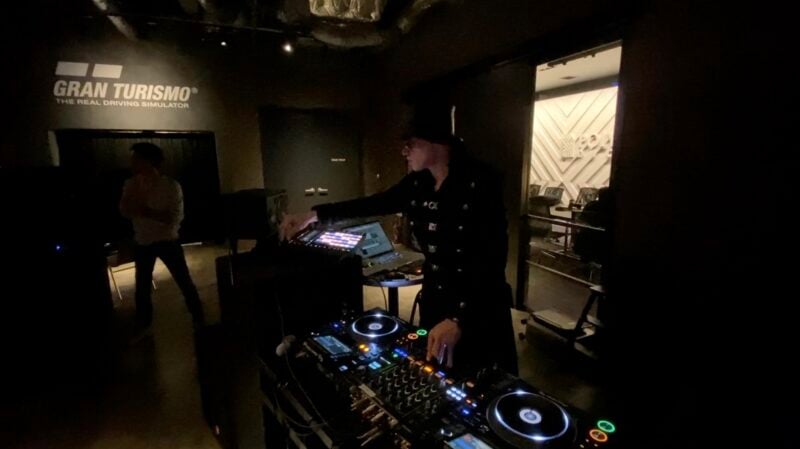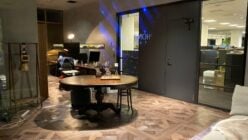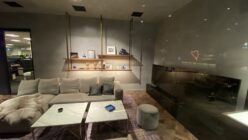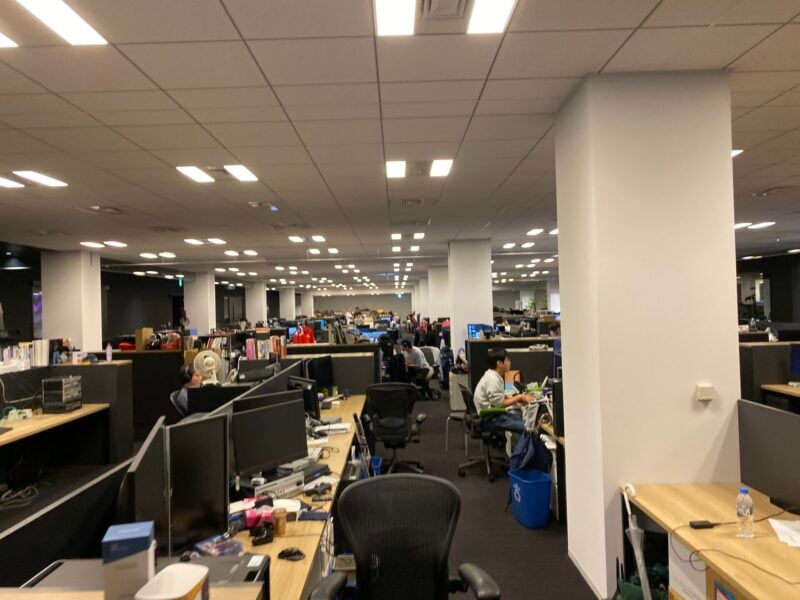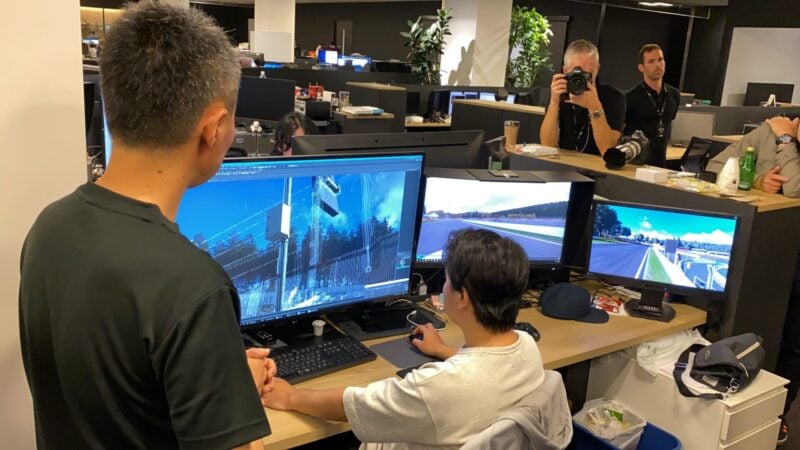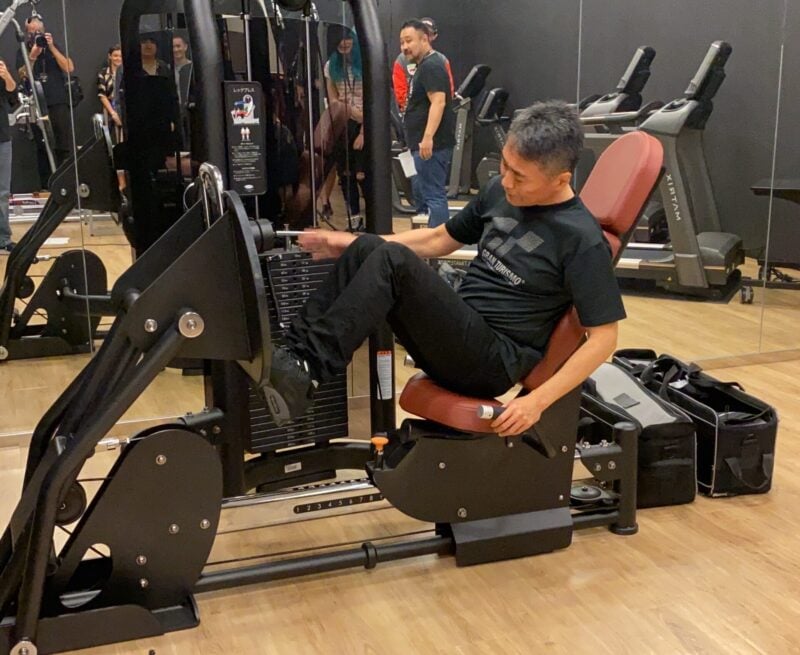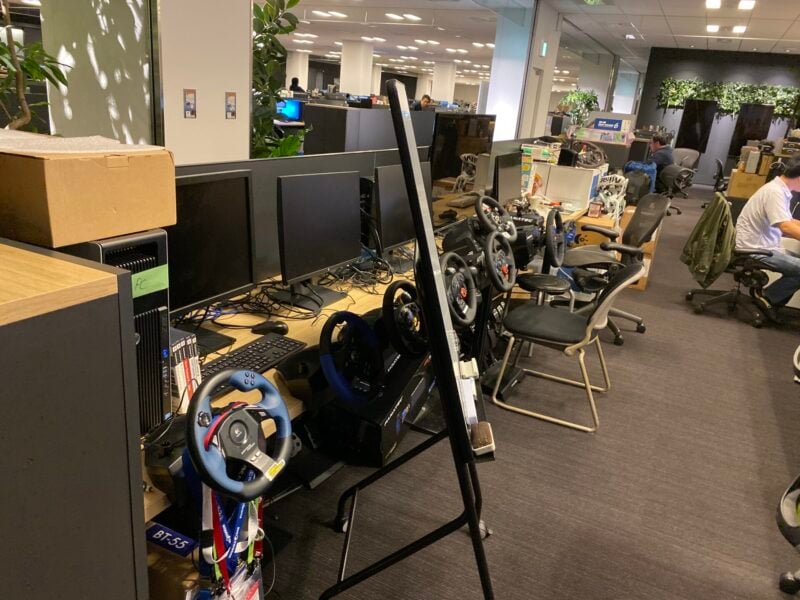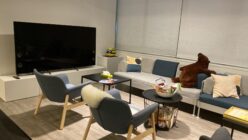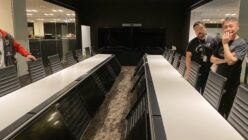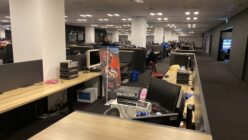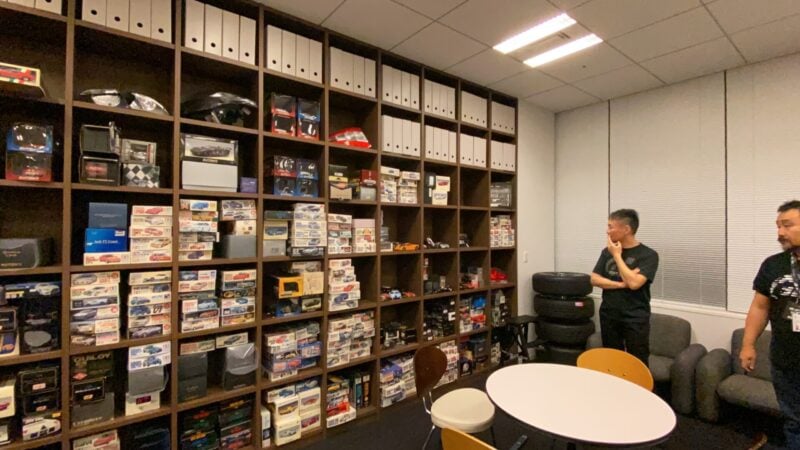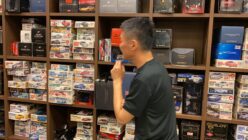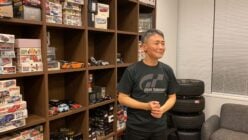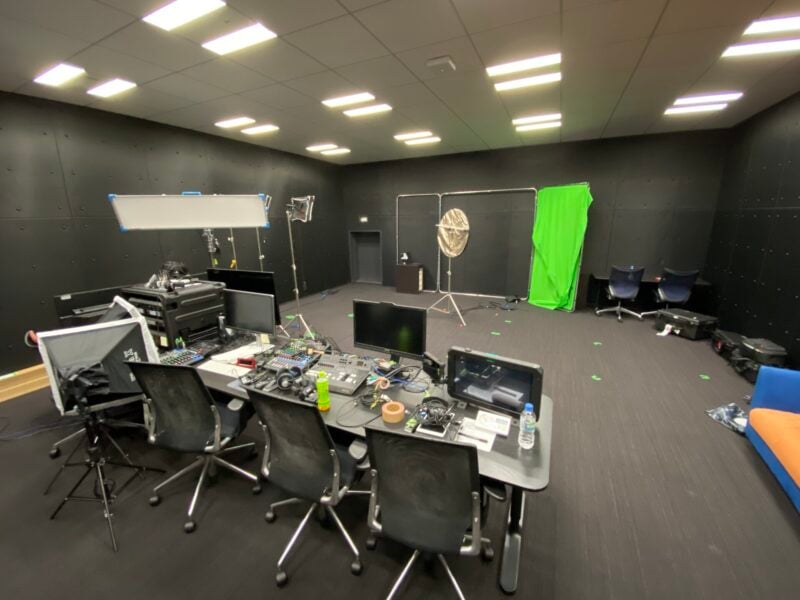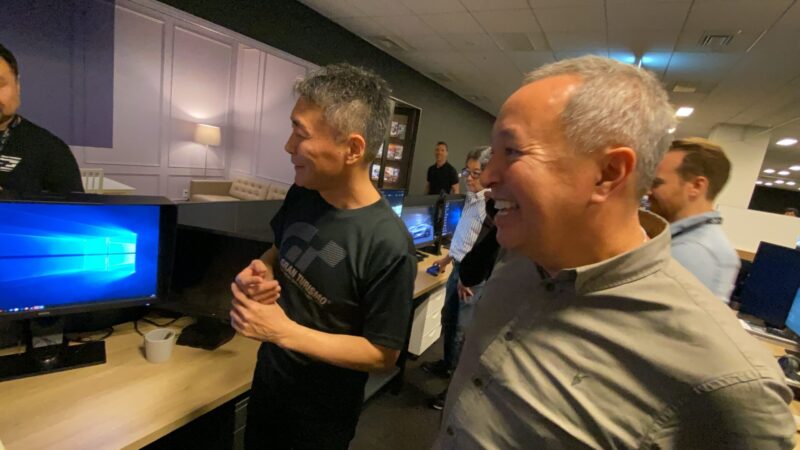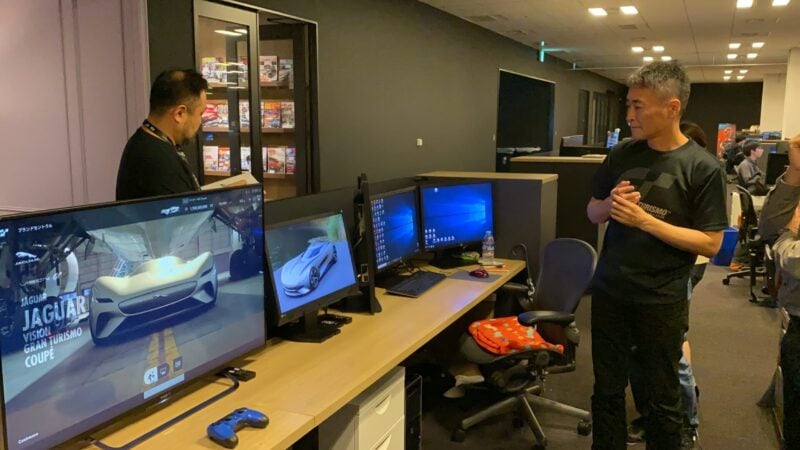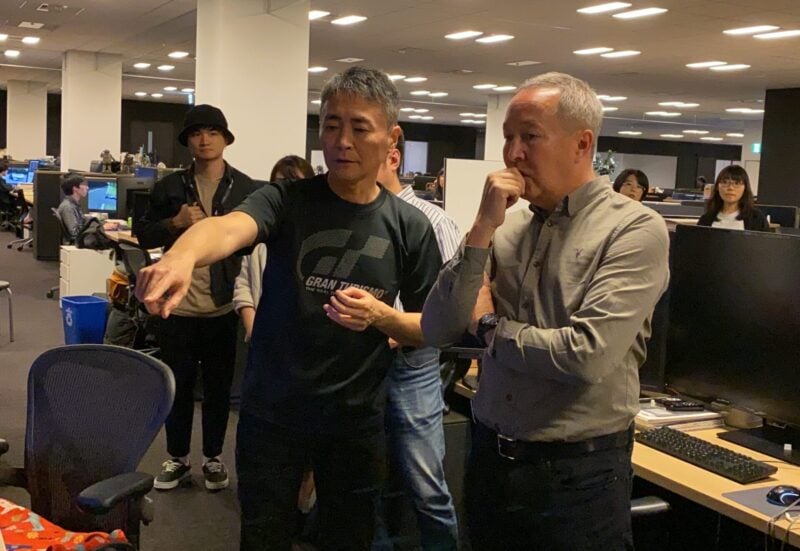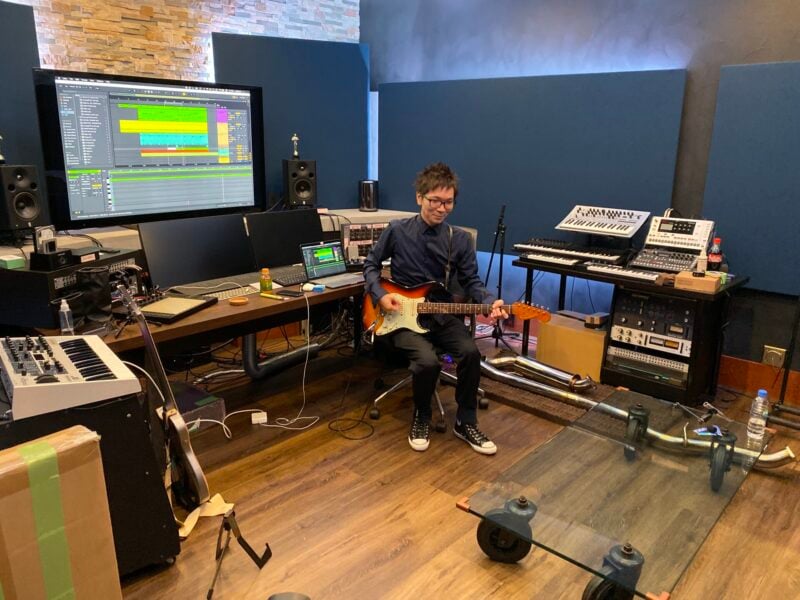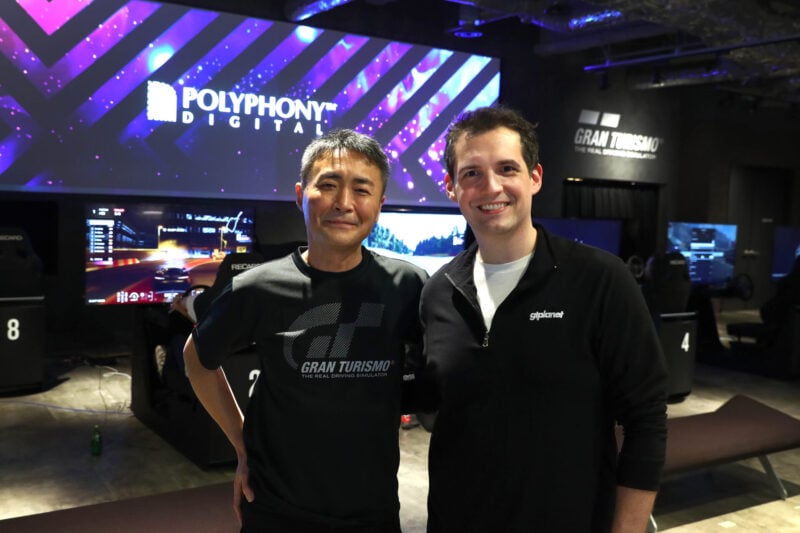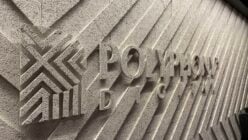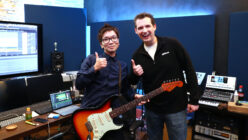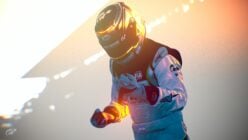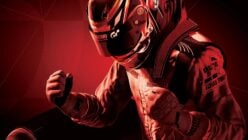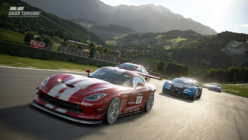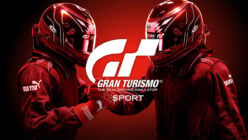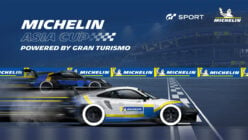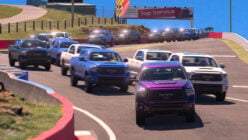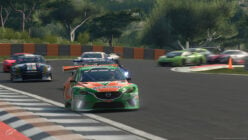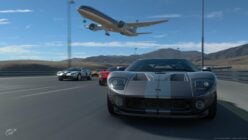At the most recent Gran Turismo World Tour event in Tokyo, I had the opportunity to tour Polyphony Digital’s studios to see exactly how Gran Turismo is made.
Of course, Polyphony is one of — if not the — most secretive video game developers in the industry. The company rarely allows media to visit its offices, and almost never allows visitors behind its desks with cameras rolling. Nevertheless, that’s exactly what I was able to do, with series creator Kazunori Yamauchi himself as tour guide.
With the next Gran Turismo game still a closely guarded secret, this is a particularly sensitive time for Polyphony Digital. It was not easy to arrange this tour, and I would like to thank my friends at Sony and Polyphony for making it possible.
First Impressions
The location of the studio is, as you might expect, a bit under-the-radar. It’s located in Koto City, an eastern business district of Tokyo, and occupies only a single floor of a larger office building. It opened earlier this year and is the company’s newest and largest studio.
Outside, the building is discreet and nondescript. The entry way is dark and dramatically lit, and you are greeted by a small sign on the wall that finally tells you where you are.
I got chills when I stepped off the elevator and realized I was looking at the logo I first saw 20 years ago, when I watched Gran Turismo 1’s now-legendary intro video. Little did I know that two decades later, I would be standing in the offices of that very same company.
Past the reception desk and down the hall, we arrive at Polyphony’s event space. It is the epicenter of the Gran Turismo world; it’s like stepping into the game, with a sense of swanky sophistication that is both utilitarian and luxurious.
Of course, there is a full selection of Gran Turismo driving rigs, just like you would see at any World Tour event.
There is also an open bar with food and drinks called the “Devil’s Diner”, named after the famed restaurant inside the Nurburgring’s tourist parking area.
On the wall above the bar, plaques commemorate the 2018 FIA Gran Turismo Championship winners, and there’s already room for 2019’s Nations Cup and Manufacturer Series champions as well.
One of the more interesting and surprising features in this space is the permanent DJ booth. Polyphony hosts office parties every Friday, and there are several employees who DJ the parties themselves. The after-party for the World Tour was held here (with Lenny Ibizarre himself in the DJ booth) and I can confirm, it’s a great place party…!
But a lot of work gets done here, too. This is home base for over 150 Polyphony employees, making it the largest of the company’s four offices. It has another office in the southern Japanese city of Fukuoka, along with smaller studios in Amsterdam and Los Angeles.
Overlooking the event space is a glass room that appears to contain the ultimate in Gran Turismo memorabilia — that’s Kazunori Yamauchi’s personal office.
The room contains many of his own racing trophies and some of Polyphony’s most prestigious awards, including the two BAFTAs it received for Gran Turismo 3: A-Spec and Gran Turismo 5.
His office is also the temporary home for the 2019 FIA Gran Turismo Championship trophies based upon Umberto Boccioni’s statue, “Unique Forms of Continuity in Space”. They will be awarded to the Nations Cup and Manufacturers Series champions at the World Finals in Monaco later this month.
After passing Kazunori’s office, we walked into the heart Polyphony’s studios. Of course, the company’s next project is still tightly under wraps; as such, there were filming and photography restrictions in this area, but I will show you what I can.
Track Modeling Department
Kazunori walked us through the process of capturing a track like Spa and adding it to the game. A data capture team of around 10 people travel to the location and take as many as 80,000 photographs, capturing every detail, texture, and surface they need to replicate.
They drive the track in a car loaded with special cameras that capture the environment in 360-degree video at 8K resolution. This gives the designers a reference to see how the track appears at any point, from any angle.
Next, the laser scanning begins. Polyphony scans each track with multiple laser scanners with varying degrees of precision, depending on what part of the environment is being captured. The highest-precision scans use fixed-position scanners which capture a radius of around 50 meters at a time.
Lower-resolution laser scans come from LIDAR mounted on cars, drones, helicopters, and even airplanes. These capture the details of the geography and buildings surrounding the track.
Once the team returns to the studio, they use the point clouds created by the laser scanners as a reference to build the 3D environments themselves.
Textures for some of the surfaces and objects in the environment are used from the collection of photographs, but not all. For larger areas, Polyphony has recently started using procedurally generated textures to create natural-looking patterns that do not repeat, but the base reference of that generated texture is still a photograph from the actual location. The entire process takes at least six months to complete.
Because of their natural complexity, the most difficult things to model in the environment are trees. Kazunori said it is a special field and requires a lot of creativity from the 3D artists; they have to make the trees as realistic and believable as possible without creating too much load on the console’s limited resources.
Kazunori made one particularly interesting comment about surface traction. Polyphony’s capture teams do collect traction data from the tarmac surfaces of the tracks which they scan. However, variable surface traction is not currently modeled in Gran Turismo Sport. The fact it does have this information is noteworthy and suggests that it might be something we see in Gran Turismo in the future.
With all the attention to detail required in replicating a real-world track, you might expect the game’s fictional tracks are faster and easier to produce, but that is not always the case.
Kazunori said the longest part of creating a fantasy track is the design of the course itself. Once that is finalized, PD decides where in the world the fantasy track will be and send a team to capture things from the area like textures and vegetation. It is still a lot of work, and requires an additional layer of creativity that is not necessary when replicating an existing track.
Fitness Room
From the track modeling department we headed into the fitness room, where Kazunori showed off his leg strength. He has a leg press in the room specifically to train for driving GT3-spec cars, which can require over 120 kilos of pedal pressure to stop.
Passing the gym, we saw several meeting and conference rooms which were in use. The global nature of Polyphony Digital means that teleconferencing plays an important role in how the company operates, and virtual meetings are critical for teams working together around the world.
The Library
We soon arrived at one of my favorite stops: the library and model room. Kazunori explained the models are particularly special memoirs to the company now.
These are the exact scale models used to create the cars in Gran Turismo 1 and Gran Turismo 2. In Polyphony’s early days, it did not have laser scanners or access to CAD data from manufacturers. It had to rely on these models to build the cars for the game, and I was glad to see Polyphony proudly preserves this unique part of their history.
The shelves of the library also contain various headlights and brake lights. In the past, Polyphony was not able to get data about the internal structure of cars’ lights, and they did not look correct when illuminated. To solve the problem, Polyphony’s designers ordered the parts themselves to study the internal structure of the reflectors and lenses.
After the library, we visited the media room which is used to record the Top 16 Superstars races, and we had a look at an area available for traditional Japanese tea ceremonies used during the holidays.
From there, we arrived at our next big stop on the tour: the car modeling department.
Car Modeling
Considering Jaguar’s Design Director Julian Thomson was part of the tour, it was no surprise the 3D wireframe of the new Jaguar Vision GT car was on full display at this workstation.
As you would expect, Polyphony Digital receives the original CAD files for car bodies directly from the manufacturers. However, this is just a starting point, as the source CAD files contain far too many polygons to be rendered in real-time for a video game.
The Jaguar Vision GT 3D model, as received from Jaguar’s designers, contains over 7 million polygons. The challenge for Polyphony’s 3D artists, then, is to figure out how to reduce the number of polygons while retaining as much detail as possible. Kazunori explains this is a very difficult process which cannot be automated. Only humans can identify the exact shapes which are most important to the car’s appearance.
To give you an idea of the immense amount of work this requires, the Jaguar Vision GT was reduced from 7 million to 70,000 polygons for the game. From there, even more models with less detail need to be produced by hand.
As cars move away from the in-game camera, Gran Turismo’s adaptive tessellation system swaps out the high-resolution models with their lower-resolution counterparts to conserve system memory. It is a labor-intensive process, and the model itself is only part of the story.
The various colors and material properties on the car must also be replicated. Once these are implemented, they examine the materials in a special version of the game engine which quickly swaps different lighting and environmental conditions. Making the materials as realistic as possible is one of the company’s greatest challenges, and Polyphony has had to build many custom design and development tools in-house.
While virtual reality glasses are not a major part of Polyphony’s development process, Julian Thomson of Jaguar said the company did use VR to design its Vision GT car. It was particularly important for the interior, as the design team studied the placement of various components like the instrument panel.
From here, we made the final stop of our tour in the audio development room, where I was surprised to see none other than Daiki Kasho himself waiting for us.
Sound Department
You may not recognize Daiki Kasho, but if you have played Gran Turismo, you have definitely heard his music.
Daiki has composed soundtracks for Polyphony Digital since Gran Turismo 3: A-Spec was released all the way back in 2001. He is responsible for some of the most iconic songs in the history of the franchise, including “Soul on Display” from the Gran Turismo 5 intro, and “Survive” from GT5 Prologue.
It was a perfect way to cap off a very special visit. Understandably, Kazunori Yamauchi gets most of the credit for the Gran Turismo games. He is the one we see on stage at media events and he is the one we speak with during interviews, and there is a good reason for that.
However, at these glitzy events around the world, it can be all too easy to forget about the hundreds of passionate, highly-skilled artists and engineers who work tirelessly behind the scenes to produce Gran Turismo. It was such a rare treat to spend time with and talk to these amazing people, and for me, that was the highlight of the whole experience.
Thank you to Kazunori Yamauchi and everyone at Polyphony Digital for hosting us in Tokyo, and thank you, once again to my friends at Sony who worked hard to make this visit possible!
See more articles on Kazunori Yamauchi and Polyphony Digital.
